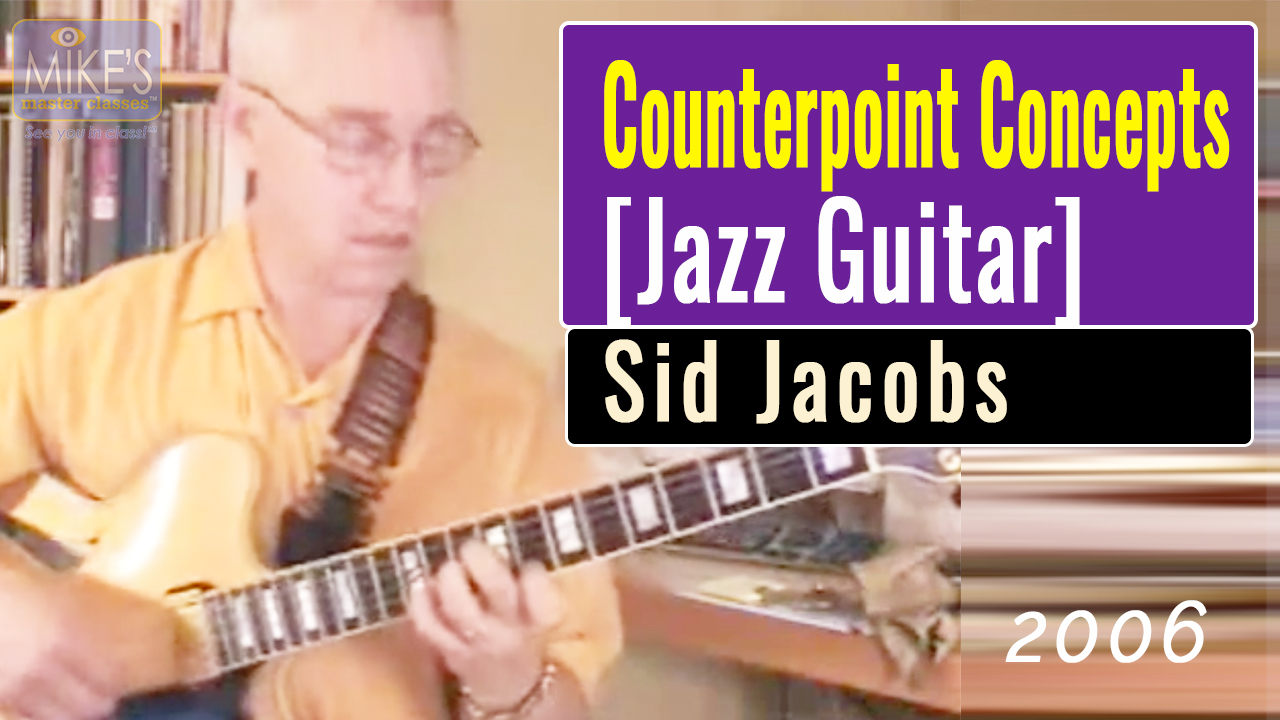From the beginning, Sid demystifies what counterpoint is by beautifully improvising on Wayne Shorter’s ballad “Infant Eyes”. You know from the beginning that Sid is an adept guitarist. He makes it clear that counterpoint – playing multiple melodies together – doesn’t have to be complicated. This course will lead you to creating solo arrangements as well as enable you to improvise using simultaneous multiple lines.
Sid lays expands over a range of topics nicely organised in four sections:
SECTION 1:
Introduces the huge influence of guitarist Jimmy Wyble on this style of playing.
Sid gives examples of not only counterpoint, but other related technical information by playing parts of “Chelsea Bridge”, “Yesterdays” and “All the Things You Are”.
He emphasises the importance of when playing a song, always knowing the thirds – major or minor – as imperative even over scale choices.
SECTION 2:
In Section Two Sid emphasises the importance of playing the guide tones – 3rds and 7ths – over any chord, as Wes Montgomery did so beautifully, despite not knowing how to read music.
He links the important concepts from the playing of Bach (the counterpoint master), Charlie Parker and Bill Evans through playing examples. Sid also explains how to steal riffs and make them your own. He takes an example from Bach and adapts it to a 2-5-1 chord change and then plays “Autumn Leaves” using this example.
SECTION 3:
Offering more techniques on how to steal from an artist by incorporating contrapuntal playing, Sid continues by adapting and recycling a Bill Evans tune.
He talks about how Bach would have approached a 2-5-1 progression in his classical approach and how improvising was a key concept of many classical composers.
SECTION 4:
Here Sid demonstrates contrapuntal playing using three dream-theme related songs:
“Darn That Dream”, “Dreamsville” and “You Stepped Out of A Dream”.
The focus is on the melody first and incorporating chords you already know secondly.
He says here, “instead of thinking chord-melody, think melody-chord”.
In other words, not playing big block chords, but placing the chords under the melody. As he plays, this wise advice is evident.



0 responses on "Video Review: Review of “Counterpoint Concepts” by Sid Jacobs"